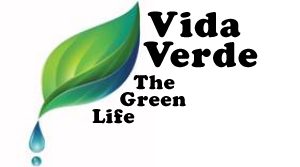There are so many compelling reasons, that fuel the massive gardening movement worldwide: Food for the table, food security, access to organic food, supporting biodiversity, saving & exchanging seed, good exercise, connection with nature. Vandana Shiva refers to seed saving as “the most important revolutionary act of our time”.
For us, these are all good reasons. It is a practice for us to make our choices with awareness of our connection to the web of life. When we live with the awareness that we are related to everything that is “Nature”, we can FEEL that when we are wasteful, or excessive in terms of inputs into the system that are unnecessary, that it hurts everything.
Therefore, “low carbon footprint” is really important to us. Or, simply, low “input”. But especially low input of anything that requires petroleum products in its fabrication. Eg. Cement & steel require very high temperatures to make, and thus lots of petroleum products. And ultimately, hauling inputs with petro-fuel is not practical from a relational stance. We work to create a system that eventually does not rely on petroleum at all. It recycles and increases nutrients within itself.
One definition of sustainability is: input equals output. Better, is a system where the yield is at least a little more than the input into the system, or much greater. But when we look deeper than “input equals output”, which is a little cold, like a formula, we realize that a truer definition of sustainability is something like “staying in balance with the network of relationships that is Life”.
Thus, when we redefine sustainability in terms of relationship, in turn, we redefine what is “practical”. We are so conditioned to make the choice that is the cheapest financial cost, thinking cheap is practical. But it is often not at all practical in the long term.
“We do it because we can” is not practical in the web of our inter-relationship with all things. Here are some examples. We can make cement barriers around our garden beds to deal with steep slope OR, we can use onsite materials to build temporary fencing while the Vetiver grass grows in. Vetiver is a great slope stabilizer. It also serves many other functions. For example, it is a bioremediator. That is, it will uptake excessive nutrients, if you have an excess of nitrogen or phosphorus, it will incorporate them and store them making a nutrient-rich mulch for later use. It is a forage for animals, and has many medicinal properties. By using Vetiver, we increase our harvest in many ways.
Other examples: We can haul in quality top-soil from a rich valley 100 km away, OR we can make compost on-site, even though it will take a little longer to get good production. We can build our structures with cement, fire-brick and steel because these materials are subsidized, making them “practical” in terms of the “bottom-line” that is dragging us all down, OR we can honor the triple bottom-line (social/eco/economic) and build with mud, as people have done for thousands of years.
In Permaculture we say, “everything gardens”. Its all a form of gardening: how we eat, how we prepare our meals, everyday consumer choices, an internet business, relating to the taxi driver.
And thus, we garden to learn about nature, and ourselves.
We garden to experience co-creating and collaborating with nature. It is an immensely fascinating ongoing study in relationship.
We invite you to join us in this study at the upcoming Vilcabamba Permaculture Design Course, Loja, Ecuador, Jan 28-Feb 9, 2020. www.vidaverde.info


